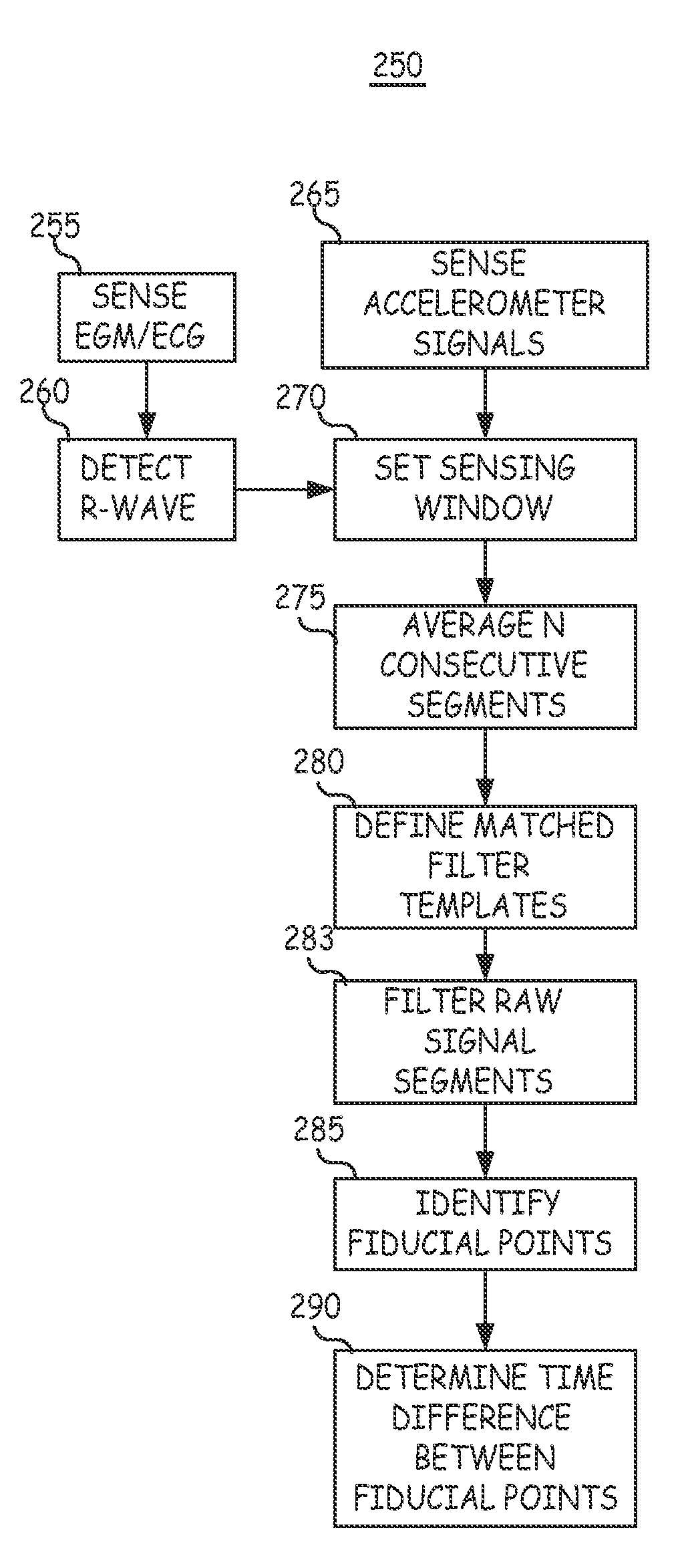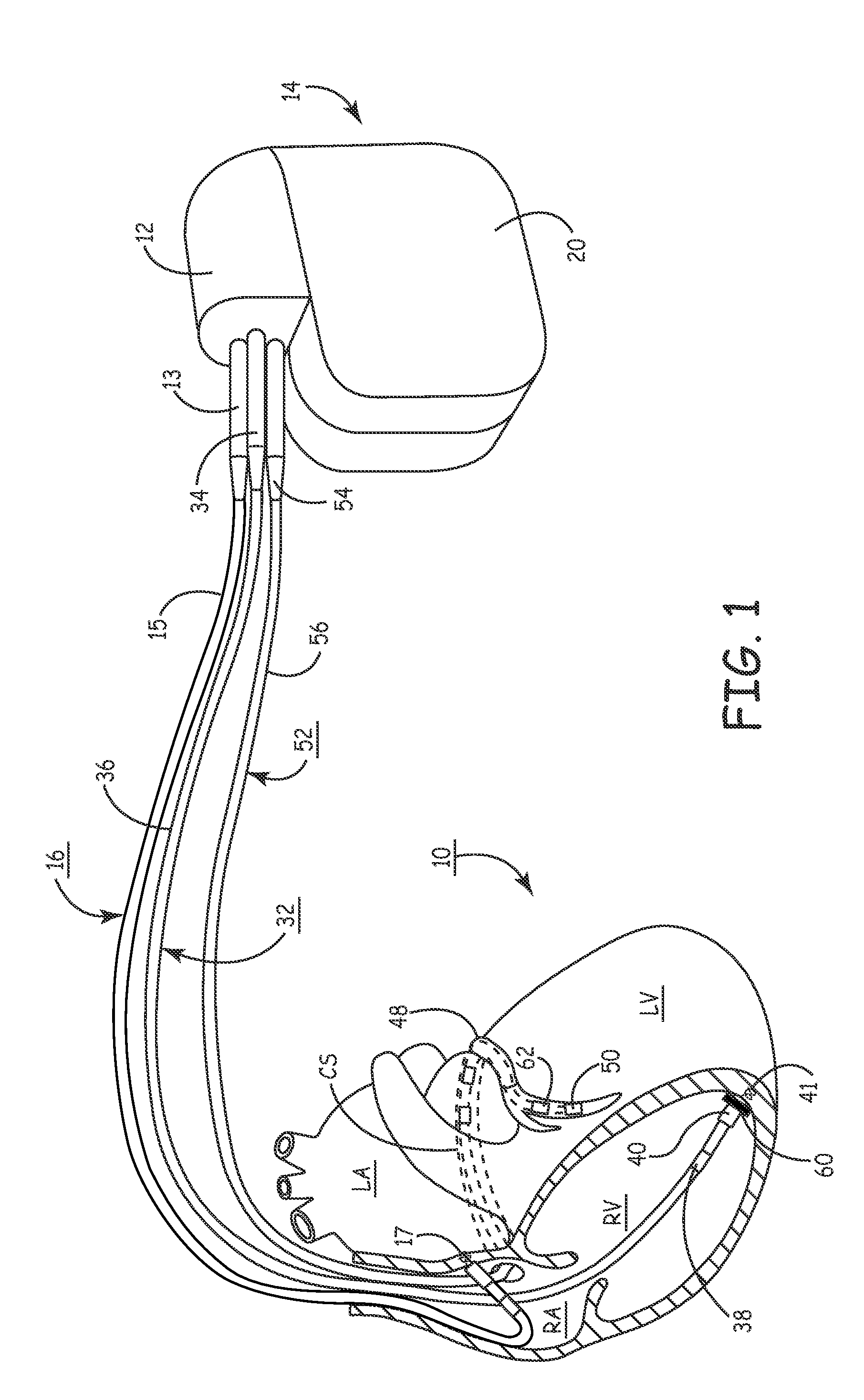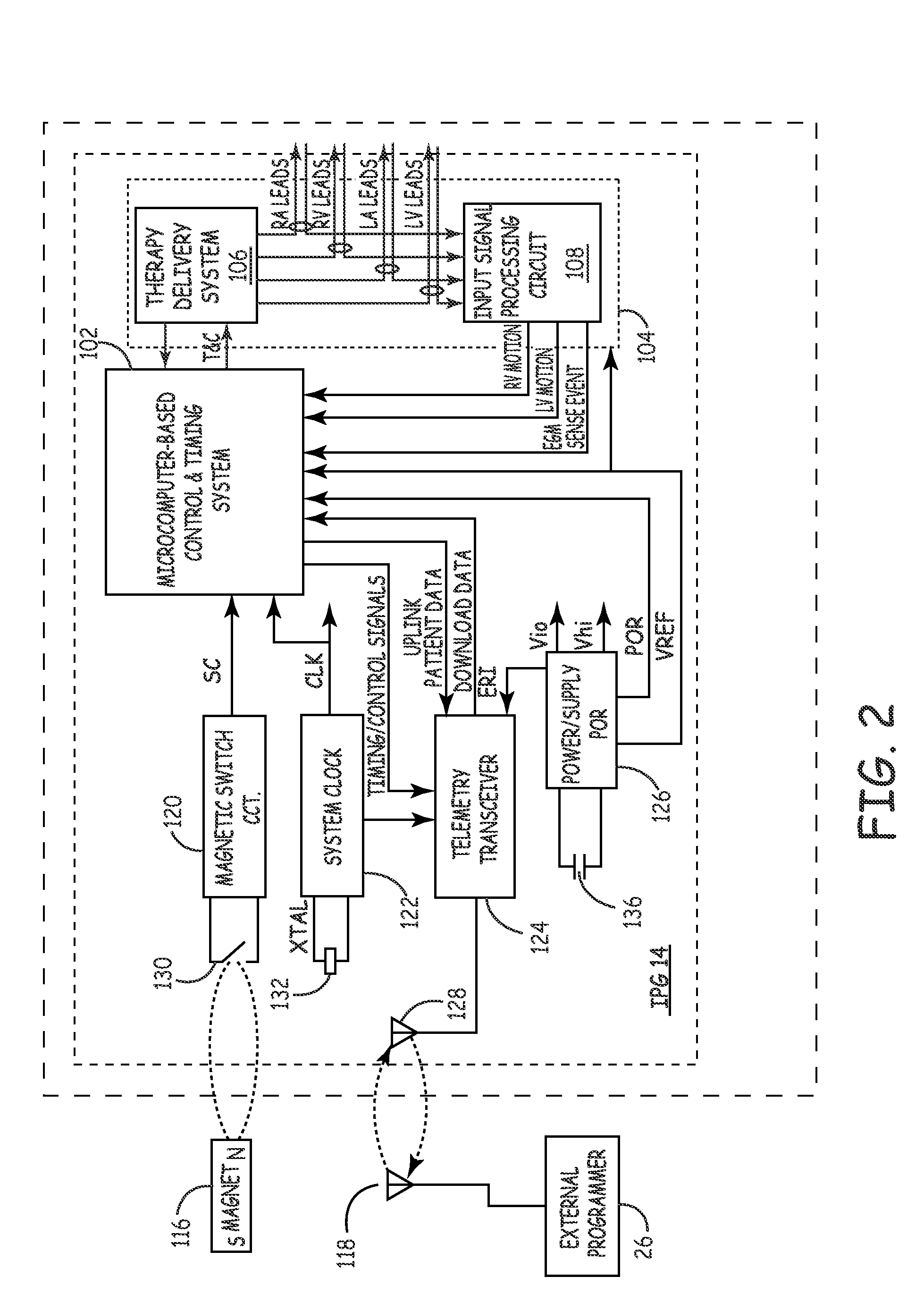Real-time optimization of right to left ventricular timing sequence in bi-ventricular pacing of heart failure patients
a right-to-left ventricular timing and bi-ventricular pacing technology, applied in the field of implantable cardiac monitoring devices, can solve the problems of reduced ability of the ventricles to generate contractile strength, hemodynamic insufficiency, and ventricular dyssynchrony following coronary artery bypass grafts (cabgs), and achieve the effect of improving hemodynamic performan
- Summary
- Abstract
- Description
- Claims
- Application Information
AI Technical Summary
Benefits of technology
Problems solved by technology
Method used
Image
Examples
Embodiment Construction
[0023]As indicated above, the present invention is directed toward providing methods and apparatus for monitoring ventricular synchrony in an ambulatory patient using at least a pair of transducers and automatically storing pacing therapy timing information and / or dynamically controlling said pacing therapy timing to maintain ventricular synchrony. A ventricular synchrony metric determined in accordance with the present invention is useful for optimizing inter-ventricular pacing intervals during chronic resynchronization therapy (CRT) delivery for treating heart failure or for managing other cardiac therapies such as medical therapies. As such, the present invention may be embodied in an implantable medical device (IMD) having ventricular synchrony monitoring capabilities and may further include CRT delivery capabilities.
[0024]While the benefits of the present invention are expected to be particularly advantageous when put to use in a fully IMD system, aspects of the present inventi...
PUM
 Login to View More
Login to View More Abstract
Description
Claims
Application Information
 Login to View More
Login to View More - R&D
- Intellectual Property
- Life Sciences
- Materials
- Tech Scout
- Unparalleled Data Quality
- Higher Quality Content
- 60% Fewer Hallucinations
Browse by: Latest US Patents, China's latest patents, Technical Efficacy Thesaurus, Application Domain, Technology Topic, Popular Technical Reports.
© 2025 PatSnap. All rights reserved.Legal|Privacy policy|Modern Slavery Act Transparency Statement|Sitemap|About US| Contact US: help@patsnap.com



